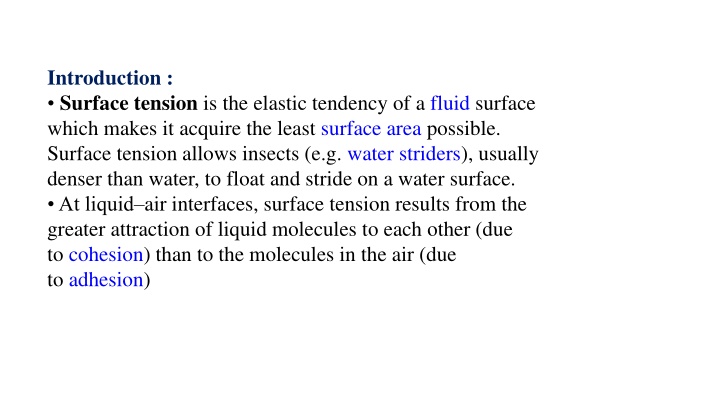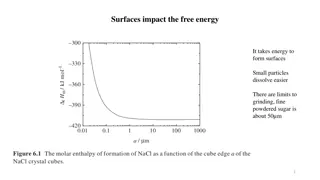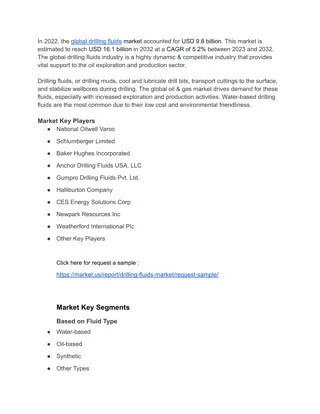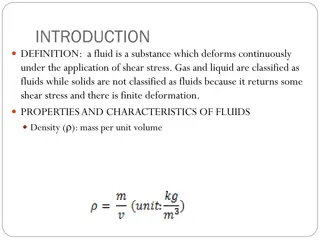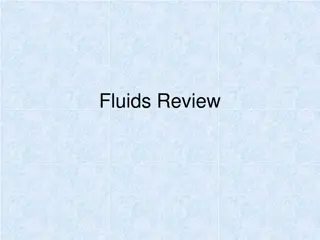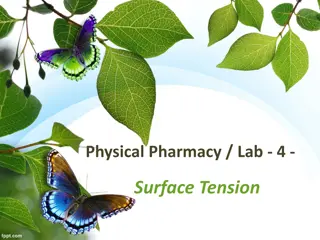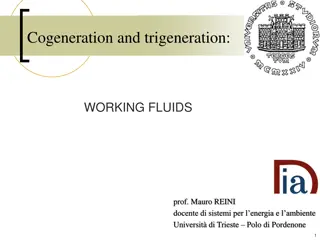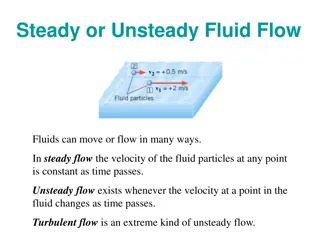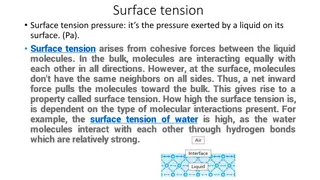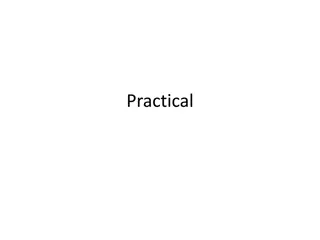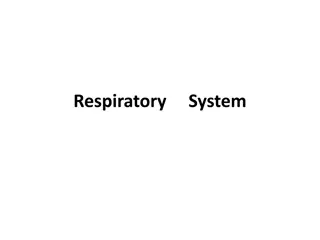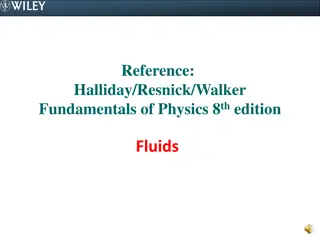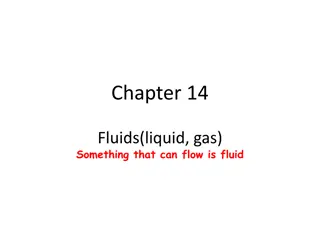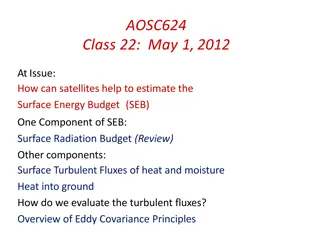Surface Tension in Fluids
Surface tension is the elastic tendency of a fluid surface to minimize its area, allowing insects to float and walk on water. Learn about its properties, applications, and capillary rise method in this comprehensive guide.
Download Presentation

Please find below an Image/Link to download the presentation.
The content on the website is provided AS IS for your information and personal use only. It may not be sold, licensed, or shared on other websites without obtaining consent from the author.If you encounter any issues during the download, it is possible that the publisher has removed the file from their server.
You are allowed to download the files provided on this website for personal or commercial use, subject to the condition that they are used lawfully. All files are the property of their respective owners.
The content on the website is provided AS IS for your information and personal use only. It may not be sold, licensed, or shared on other websites without obtaining consent from the author.
E N D
Presentation Transcript
Introduction : Surface tension is the elastic tendency of a fluid surface which makes it acquire the least surface area possible. Surface tension allows insects (e.g. water striders), usually denser than water, to float and stride on a water surface. At liquid air interfaces, surface tension results from the greater attraction of liquid molecules to each other (due to cohesion) than to the molecules in the air (due to adhesion)
Surface tension has the dimension of force per unit length, or of energy per unit area. The two are equivalent, but when referring to energy per unit of area, it is common to use the term surface energy, which is a more general term in the sense that it applies also to solids. In materials science, surface tension is used for either surface stress or surface free energy.
Surface Tension: Free surface of a liquid has tendency to contract in surface area is called surface tension. SI unit of Surface tension: N/m. or (J/m ). Its Dimension is [M L T ]. Angle of Contact : The angle measured from the side of the liquid, between the tangent to the solid surface inside the liquid and tangent to the free liquid surface at the point of contact between solid and liquid surfaces
Capillary Rise Method: Total upward force = R cos circumference of the tube (i.e) F = 2 r R cos or F = 2 r T cos This upward force is responsible for the capillary rise. As the water column is in equilibrium, this force acting upwards is equal to weight of the water column acting downwards. F = w. T = hgr /2cos h = 2TCos / gr
The radius of the capillary tube is determined using the travelling microscope. If is the density of water then the surface tension of water is given by T = hr g/2cos , = 0 , cos 0 = 1. T = hr g /2 where g is the acceleration due to gravity. where g is the acceleration due to gravity. The radius of the capillary tube is determined using the travelling microscope. If is the density of water then the surface tension of water is given by T = hr g/2cos , = 0 , cos 0 = 1. T = hr g /2
Application of surface tension: Surface tension of soap solution is less, it can spread over large areas and wash clothes more effectively, since the dirt particles stick to the soap molecules. In soldering, addition of flux reduces the surface tension of molten tin. Hence, it spreads. Antiseptics like dettol have low surface tension, so that they spread faster. Surface tension prevents water from passing through the pores of an umbrella. A duck is able to float on water as its feathers secrete oil that lowers the surface tension of water.
